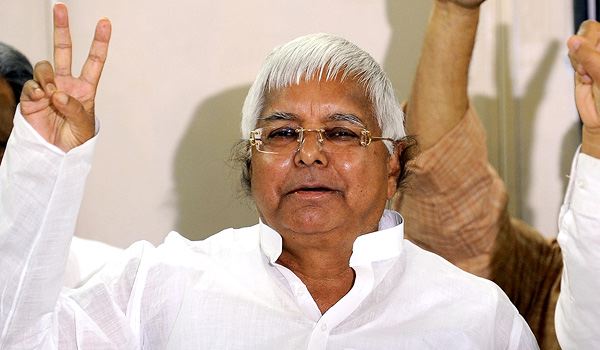Summary: Just because you have taken on a risk by investing in stocks, doesn’t mean high returns are going to materialise.
The only function of economic forecasting is to make astrology look respectable – John Kenneth Galbraith.
It was sometime in October-November 2010. I had just joined a weekly personal finance newspaper, which for reasons I did not understand and for reasons above my paygrade, was to be run out of Delhi.
During the course of one editorial meeting, we had to decide what sort of return would systematic investment plans (SIPs) into equity mutual funds generate over the next decade. This was necessary as a part of a regular feature to be published in the newspaper, which would help a featured family come up with an investment-savings plan.
It was assumed that SIPs into equity mutual funds would generate 15% per year return. I protested against the assumption saying that 15% per year return was way too high but was overruled by the Delhi bosses.
At that point of time it had almost become fashionable to say that the stock market generates 15% return per year in the long term (In fact, there are people who still believe in this myth, which I shall write about in detail in the time to come).
Getting back to the point. We are now in 2020. 10 years have gone by. As I pointed out in a piece yesterday, the SIP returns on index funds have been rather subdued over the last decade. The average per year return over the last decade in case of the three Nifty index funds I checked was slightly over 9% (around 9.17% to be very precise). Index funds are funds which have a mandate to invest money in stocks that make up a stock market index, in the same proportion that they do.
The per year return of a little over 9% was nowhere near the assumed 15% per year return. Let’s say an individual had invested Rs 10,000 per month religiously through the SIP route for ten years. On this if he had earned a return of 15% per year, the value of his portfolio at the end of 10 years would be Rs 27.5 lakh.
If the return was 9.2% instead as it actually turned out to be, the value would be around Rs 19.6 lakh or around 29% lower. If the individual was saving towards a certain goal, he would end up way short. But that’s the rather obvious point here.
The question is how did the market narrative of stocks giving 15% return in the long-term come about? The first time I heard this 15% argument being made with a lot of confidence by marketmen was sometime in late 2006 or perhaps early 2007.
This, after the Indian economy had grown by greater than 9% in real terms for three consecutive years, 2004 to 2006. The zeitgeist or the spirit of the times that prevailed was that come what may India will now grow by at least 8% in real terms. Add an inflation of 5-6% on top of that and we will grow at 13-14% in nominal terms, year on year.
Assuming that the earnings of companies which are a part of India’s premier stock market indices would grow a tad faster than the nominal growth, we arrived at 15-16% year on year growth in earnings.
This would be reflected in stock prices growing by 15-16% per year as well. From here came the assumption, the stock market growing at 15% in the long-term. There is a lot more to this assumption including Sensex returns from 1979 on, but I will leave that for another day. For the time being knowing this much is fine.
In fact, over the years, I have seen this logic being offered by people who make their money in the stock market by managing other people’s money or OPM or even better OPIUM, with great conviction. These tend to include fund managers, analysts, traders, salespeople etc. (Oh, if you still didn’t get it, OPM and OPIUM sound the same. Rather childish, but good fun nonetheless). Those in the business of managing OPIUM really believe that stocks give 15% per year return over the long-term (I even wrote a piece on this titled Why Economic Growth Cannot Be Created on an Excel Sheet. You can read it here).
The trouble is that this assumption has turned out to be all wrong. The earnings growth has been nowhere near what the OPIUM managers have been projecting. This is reflected in the 10-year return on stocks, which as of August 20, 2020, stood at 8.7% per year (based on the Nifty 50 Total Return Index, which takes dividends paid by companies into account as well, unlike the normal index).
The funny thing is that the stock market has delivered a return of just 8.7% per year over the last decade, despite the valuations being at all time high levels. The price to earnings ratio of stocks that comprise the Nifty 50 index is around 32 these days. This basically means that for every rupee of earnings for these stocks, the investors are ready to pay thirty-two rupees as price. As I pointed out yesterday, such high valuation has never been seen before.
And despite such a high valuation the decadal per year return on stocks on an average is less than 9% per year. This is the irony of it all. It also makes me wonder why investors think that the stock market is doing well. Yes, it has done well in comparison to where it was in late March 2020, but clearly not otherwise.
Of course, when the OPIUM managers talk about 15-16% return per year from stocks over the long-term, they also highlight the fact that for higher return a higher risk needs to be taken on by the investor. The higher risk is the risk of investing in stocks for the long-term.
But what they don’t talk about is the fact that just because you are taking the risk of investing in stocks for the long-term, doesn’t mean that higher returns are going to materialise. I would like to call this, the risk of risk of investing in stocks, something which most OPIUM managers don’t seem to talk about.
The question is why does this happen? The answer lies in the fact that OPIUM managers are in the business of driving up assets under management for the firms that they work for. More the money that gets invested in a fund, the higher the fee earned by the firm to manage that money. And in this business of soliciting money, you need to sound confident.
The moment you start getting into nuance about high risk not guaranteeing high returns, you start losing the average prospective investor. Hence, the projection of confidence that the prospective investor is looking out for, leads to simplistic one-line market narratives like stocks will definitely give a 15% per year return, over a decade. Such narratives are easier to sell.
In a world full of complex uncertainties, the prospective investors are looking for certainty and those in the business of managing OPIUM can’t consistently project confidence to tackle the complex uncertainties, unless they believe in stocks giving 15% per year return in the long-term, themselves. This is the con of confidence which fools people on both sides.
The trouble is such narratives hurt. As economists John Kay and Mervyn King write in Radical Uncertainty – Decision Making For an Unknowable Future: “Markets narratives are occasionally ‘dishonest and manipulative’, but normal people make honest use of narratives to understand their environment and guide decisions under radical uncertainty.” (King and Kay’s book is a terrific read though not a breezy one. Highly recommended).
This is not to say that one should not invest in stocks and invest all our money in bank fixed deposits. Not at all.
All I am trying to say is that just because you have taken on the risk of investing in stocks, doesn’t mean higher returns are going to materialise and which is why it’s called risk in the first place. So, you might end up short on the corpus you were trying to build (assuming you are trying to do this in a systematic way).This is something that needs to be kept in mind while investing in stocks either directly or indirectly through mutual funds. This is the risk of risk of investing in stocks. While all mutual fund ads have a disclaimer at the end saying that mutual fund investments are subject to market risk, nobody really explains to the investor what exactly this market risk is.
The economist Allison Schrager makes this point in the context of saving for retirement in her brilliant book An Economist Walks into a Brothel—And Other Unexpected Places to Understand Risk. The conventional wisdom is that when it comes to saving for retirement it makes immense sense to build up as large a retirement corpus as possible and then spend it at the rate of, say 4%, per year, after retirement.
The problem with this strategy is that 4% per year isn’t really a fixed amount. It depends on the retirement corpus one has been able to build up in the first place. And that in turn depends on how the stock market has been doing. As Schrager writes: “That’s where the strategy goes wrong.”
One way of getting around this problem is that in the years approaching retirement you take your money out of stocks and invest it in fixed income investments, everything from bonds to fixed deposits. This mitigates the risk to some extent but not totally.
What if the stock market is not doing well in the years before retirement? What do you do then? Do you continue staying invested in the stock market in the hope that it recovers, and you build a better corpus? What if it doesn’t?
That’s the risk of it all. At the cost of repeating just because you have invested in stocks and taken on a higher risk doesn’t mean higher returns are automatically going to materialise.
To conclude, it is important that as a stock market investor you realise this, irrespective of whether the OPIUM managers communicate this or not.
Stay safe and enjoy the weekend.
Will see you now on Monday (or perhaps Tuesday, depending on what my brain throws up over the weekend).
Disclaimer: This article is meant for educational purposes only.




